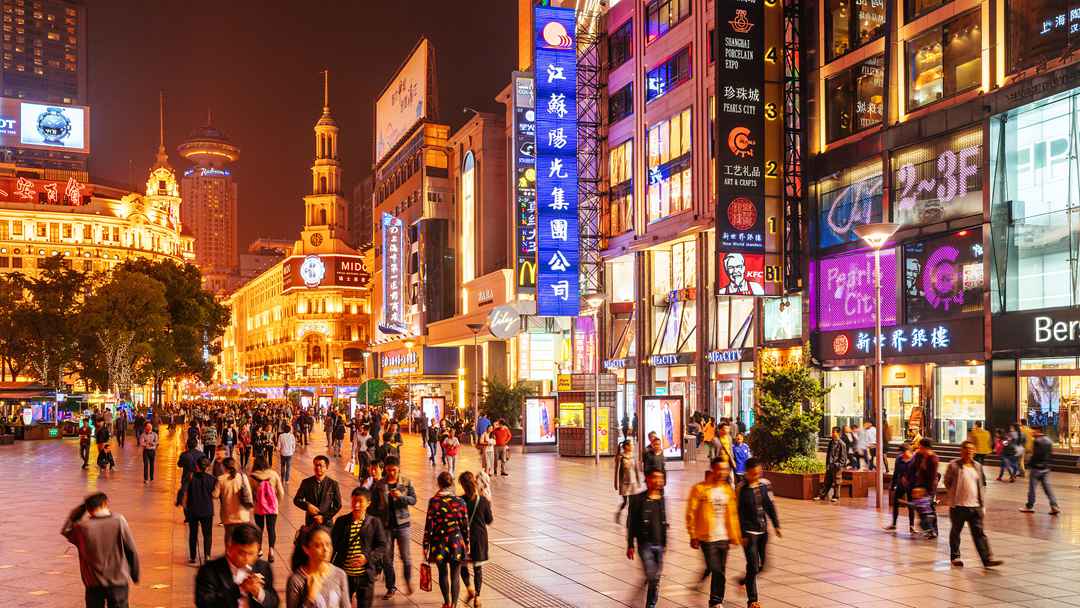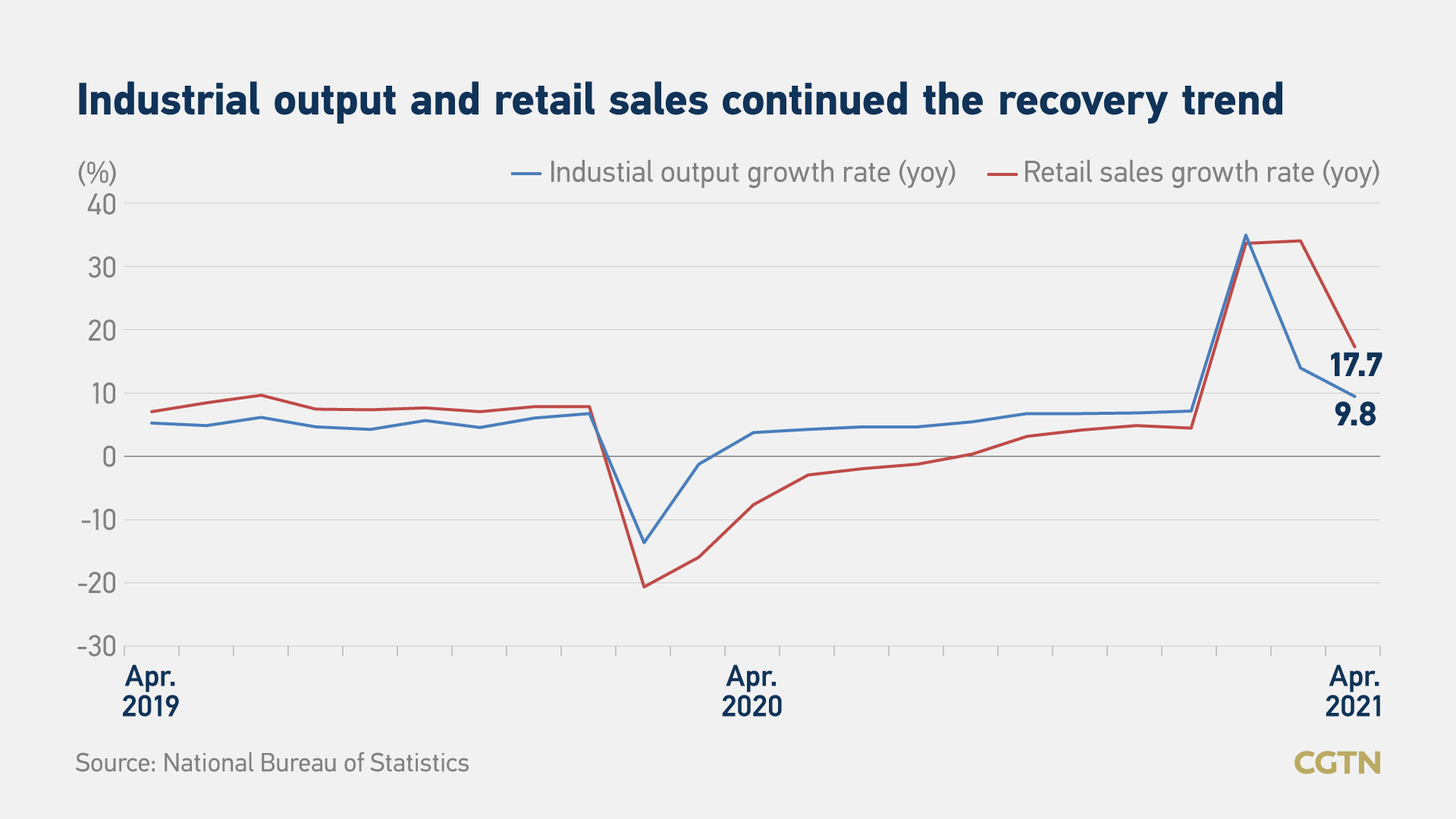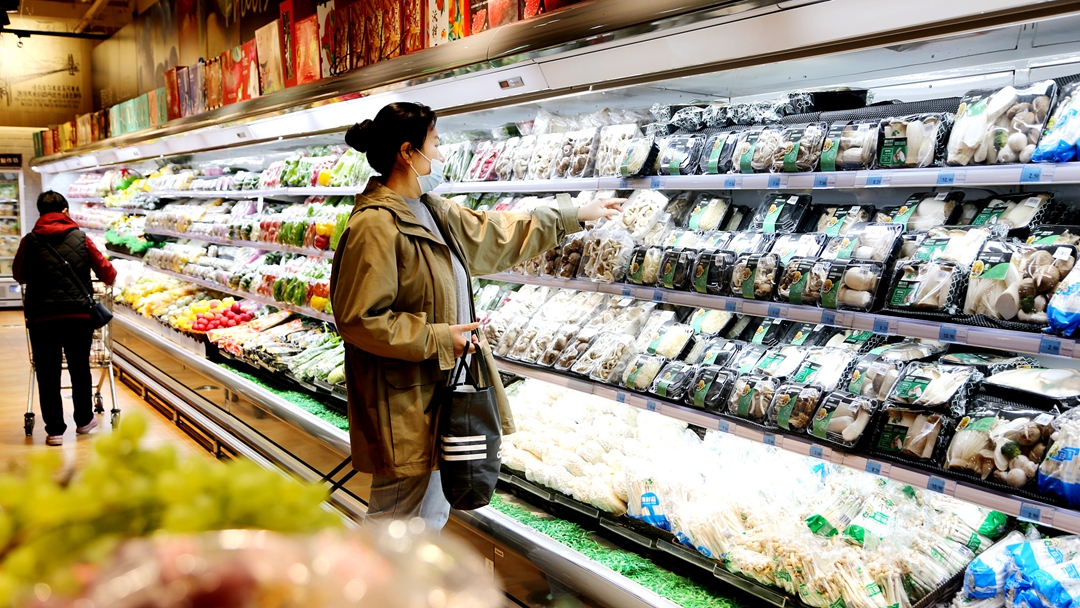
Nanjing Road, a main shopping street in Shanghai, China. /VCG
Nanjing Road, a main shopping street in Shanghai, China. /VCG
China's economy moderated in April from its record growth in the first quarter as retail sales and industrial output slowed, data from the National Bureau of Statistics (NBS) showed on Monday.
Retail sales of consumer goods rose by 17.7 percent from a year earlier in April, slowing from the 34.2-percent jump registered in March, according to the NBS data. They missed forecasts of a 24.9-percent growth by analysts from a Reuters poll and saw an average two-year growth of 4.3 percent.
Industrial output grew by 9.8 percent year on year in April, down from 14.1 percent in March. It matched expectations from analysts surveyed by Reuters and saw an average two-year growth of 6.8 percent.
The recent, rapid rise in raw material prices encouraged industrial production and restocking; however, they also dented some real final demand, warned Lu Ting, chief China economist at Nomura, in a note to CGTN.

China's economy continued its recovery in April, but new circumstances have emerged, said Fu Linghui, an NBS spokesperson at a news briefing on Monday.
"China's economy is showing signs of unbalanced recovery," Zhang Zhiwei, chief economist at Pinpoint Asset Management, told CGTN. He said the country saw strong exports and domestic investment on the one hand but weak consumption on the other.
Zhang said economic growth likely peaked in the first quarter and expects that it will gradually ease in the coming months.
China's gross domestic product (GDP) expanded at a record pace of 18.3 percent year on year during the first quarter of this year as it rebounded from a historic contraction of 6.8 percent in the first quarter of 2020.
The country's foreign trade volume in dollar terms surged by 37 percent year on year to $484.99 billion in April 2021, with exports rising by 32.3 percent to $263.92 billion and imports soaring by 43.1 percent to $221.06 billion, both continuing a strong rebound.
Investment in fixed assets continued to recover, up by 19.9 percent year on year in the first four months, with an average two-year growth of 3.9 percent. In April, the investment in fixed assets grew by 1.49 percent on a monthly basis.
Recovery continues in April
Recovery in industries hit hard by COVID-19 accelerated in April with the Business Activities Index for accommodation, catering, ecological protection and environmental treatment, culture, sports and recreation between 1.8 and 5.7 percentage points higher than that of the previous month.
01:49

China's Consumer Price Index (CPI), the main gauge of inflation, posted a year-on-year increase of 0.9 percent in April.
Fu said there is a basis for prices to remain stable throughout the year, as emergency fiscal and monetary policy measures introduced to combat the COVID-19 epidemic are gradually being withdrawn.
Online sales saw a year-on-year growth of 27.6 percent and an average two-year growth of 13.9 percent, NBS data showed.
The value-added of equipment manufacturing and high-tech manufacturing grew fast in April, up 13.1 percent and 12.7 percent year on year and an average two-year growth of 11.2 percent and 11.6 percent respectively.
In April, the Manufacturing Purchasing Managers' Index stood at 51.1, above the 50 threshold for 14 consecutive months.
Investment in the primary and high-tech industries and the social sector also grew fast, up by 35.5 percent, 28.8 percent and 26.3 percent respectively year on year, with an average two-year growth of 15.2 percent, 11.8 percent and 10.6 percent.
China's Producer Price Index (PPI), which measures the costs of goods at the factory gate, saw a more-than-expected year-on-year increase of 6.8 percent in April.
"Amid rapidly rising PPI inflation and raw material prices, we expect Beijing to increase the government bond issuance in coming months," wrote Lu.
"This would alleviate some pressure on the demand side from the surge in raw materials prices."
Read more: China's PPI surges more than expected in April
The surveyed unemployment rate for urban workers declined and employment was generally stable. In the first four months, the number of newly employed people in urban areas totaled 4.37 million. In April, the urban surveyed unemployment rate was 5.1 percent, 0.2 percentage points lower than in March.
"With the steady recovery of the economy, employment is expanding and personal income also increased in the first quarter, which is conducive to increasing consumption capacity," Fu said.
However, Zhang said the new COVID-19 cases recorded in the country are likely to be on policymakers' radar.
"The government may put the monetary policy tightening on hold for now and observe the pace of recovery. The probability of a rate hike by PBOC (the People's Bank of China) has declined," Fu said.
"We must be aware that the global situation of the COVID-19 is still complicated and the world's economic recovery is unbalanced. At home, the foundation for the economic recovery is not yet solid."
(Liu Jiaxin contributed to this story)

